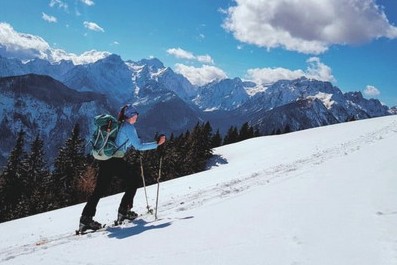Safe Ski Mountaineering
Views: 3
Ski mountaineering, snowshoe tours and snowboarding tours are a great way to get fit, experience nature and socialise.
1. Be in good health and fit
Ski tours are an endurance sport. They make your heart, circulation and muscles work hard, so good health, a high
fitness level and a good assessment of your capabilities are required. Avoid having to rush but adopt a pace without anybody in your group getting out of breath. Make sure you pace yourself and have enough energy for the descent.
2. Plan your tour carefully
Maps, guidebooks, the internet and experts are good sources of information about routes, distances, differences in altitude and the current conditions. Pay particular attention to the weather forecasts, as cold conditions, strong winds and poor visibility greatly increase the risk of accidents. Also plan alternative routes and check points.
3. Use complete equipment
Make sure you have the right equipment for winter conditions and your specific destination. For avalanche emergencies, an avalanche transceiver, shovel and probe are standard equipment as well as a first-aid kit, bivouac sack and mobile phone (European emergency number 112). An airbag system increases the chances of survival. Check
your equipment, avalanche transceiver check before the start!
4. Study the avalanche report
Before starting the tour, find out details of the avalanche risk: What is the danger level, where are the danger points, what are the current avalanche problems?
5. Weigh up the avalanche risk
Assessing the avalanche risk in the terrain is difficult for everyone. Base your decisions on strategic risk assessment methods (reduction methods) and pay attention to signs of danger in the terrain. Avoid dangerous areas and turn around if there is any doubt.
6. Orientation and breaks
Orient yourself constantly. It is important to know how to use a map, altimeter, compass, app or GPS. Drinking, eating and making breaks are necessary to maintain performance and concentration.
7. Keep your distance
Keeping your distance reduces the load on the snowpack and your risk. A distance of 10 m between mountaineers when ascending steep slopes also makes kick turns easier. On downhill sections, always maintain a distance of at least 30 m. Ski down very steep slopes one by one.
8. Avoid falls
Falls on downhill sections are the main cause of accidents on ski tours. They are also a major additional load on the snowpack. Good skiing techniques and a suitable speed for your ability reduce the risk. A ski helmet can protect against head injuries! Careful! There is a higher risk of falls when the snowpack is frozen and on rocky terrain.
9. Go in small groups
Small groups (up to six people) are safer. Communication with other winter sports enthusiasts and mutual consideration prevent dangerous situations. Stay with the group. Inform someone you trust of your destination, route and return time. Important note for solo skiers/ snowboarders: minor incidents can turn into major emergencies.
10. Respect nature
The mountains provide a valuable environment for experiencing wilderness. Enjoy this freedom! Be considerate of wild animals, respect protected areas and do not enter reforestation areas. Use public transport or car-share to get to your starting point.

